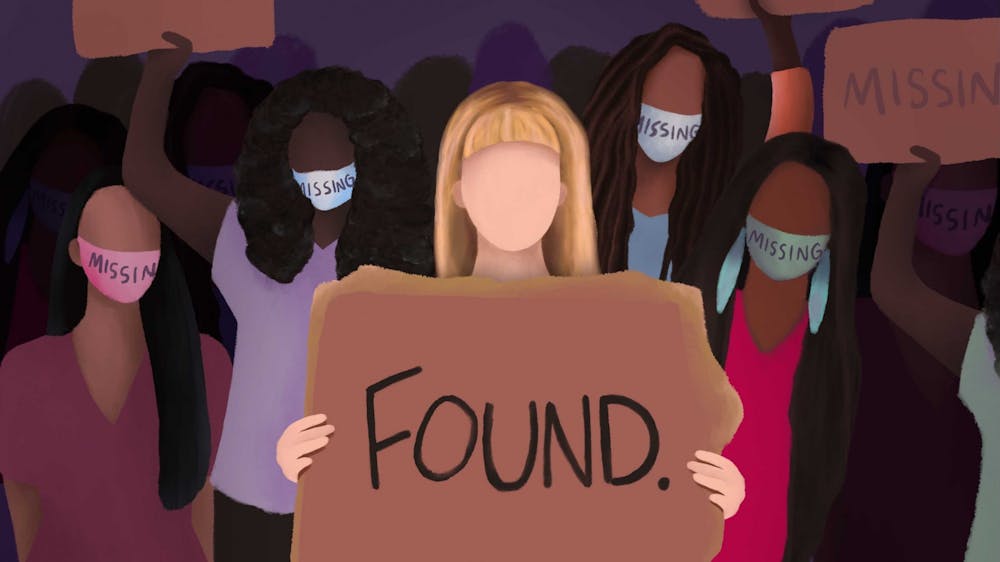For years, the United States has had a negative relationship with Black and Brown communities, and the effects are still present when it comes to the number of missing people of color across the nation.
A surge of critics are accusing the media of “missing white woman syndrome,” which is the disproportionate coverage of missing white people over marginalized groups. This inadequate media coverage has existed for many years and continues to create division not only in missing person cases.
The focus on Black and Brown cases seems minimalized in context with coverage of white women. There is also a major concern with the lack of attention police forces seem to give to minority, missing cases.
According to Statista, about 34% of all missing person cases last year were Black people, which is about 182,548 people. Black people account for less than 15% of the entire U.S. population but have the second highest missing person cases every year, according to NPR.
Tens of thousands of Black women go missing every year. What stands out is their stories do not seem to get enough media attention and value as white people’s missing cases do.
According to Our Black Girls, many Black people’s missing person cases go unsolved every year with only a handful given adequate attention. Unfortunately, family members and friends of these missing individuals are given the runaround in terms of police updates and efforts to find them.
It seems that media attention favors certain stories over others. But, no case is or should be worth more than the other. Missing people, regardless of ethnicity or background, should be treated with the same level of urgency. While specifics and details surrounding individual cases differ, the value of a person's life should always be the same.
From the disappearance of Chenell Gilbert in Indianapolis to Pat Moss in Riverdale, Georgia, Black women’s missing person cases remain one of the highest of being unsolved.
Gilbert went missing on June 9, 2020, after leaving her home. Her two daughters thought her behavior was strange and grew worried about their mother’s whereabouts. Gilbert’s phone was last pinged at her ex-boyfriend’s house. Since her disappearance, Gilbert’s family has received little to no update on breaks in her case in over a year.
Gabby Petito went missing during a cross-country trip with her boyfriend, but her last conversation with family was on Aug. 30, according to CNN. Petito was reported missing on Sept. 11 and, after national attention, she was found on Sept. 19.
There is a clear distinction between white people receiving more attention, which blatantly creates the division between ethnic groups as it seems clear white people are given higher levels of importance.
Some people believe the country shows favoritism toward missing white women than any other group, coinciding with the long history of bias and discrimination felt within the nation.
The question left on many people’s minds is, “Who determines which missing person gets more attention?” No competition should exist between any missing person. Families deserve to know there are no biases in terms of finding their loved ones. However, it is clear that this is not the case.
Missing Black women and girls appear to be disregarded in the media. The entire nation should understand a person going missing is not normal. A person’s life should never be disregarded.
This should be labeled as a public health crisis, and Black people as a whole deserve better than what has been given. The fear of being a Black missing person is heightened because the odds of being found do not weigh in our favor.
All missing persons deserve attention, as opposed to only some. There should be no divide between the importance and values of life.
Black Lives Matter.






